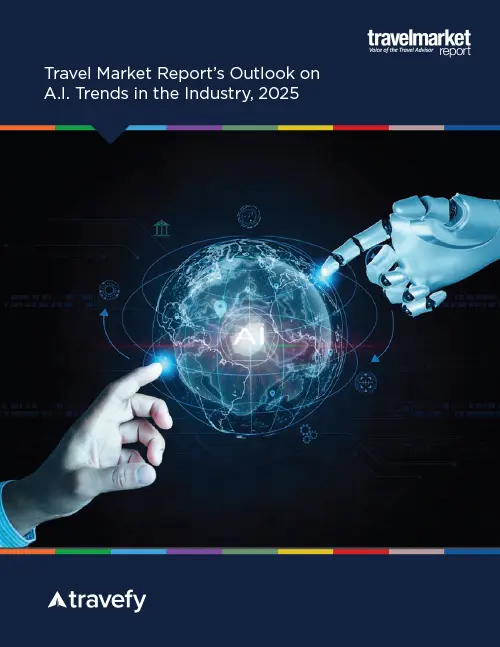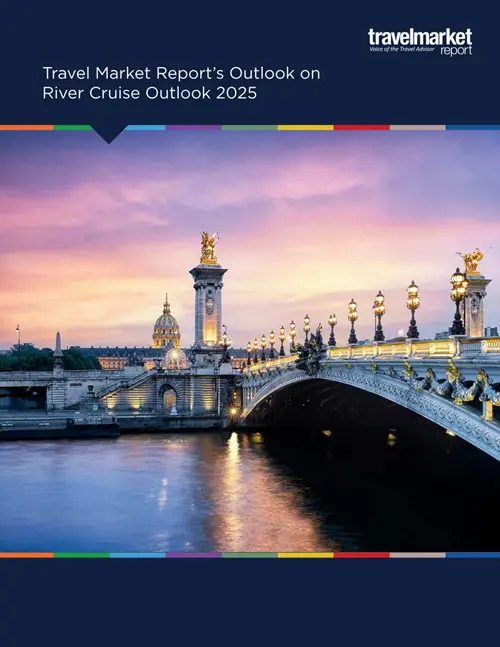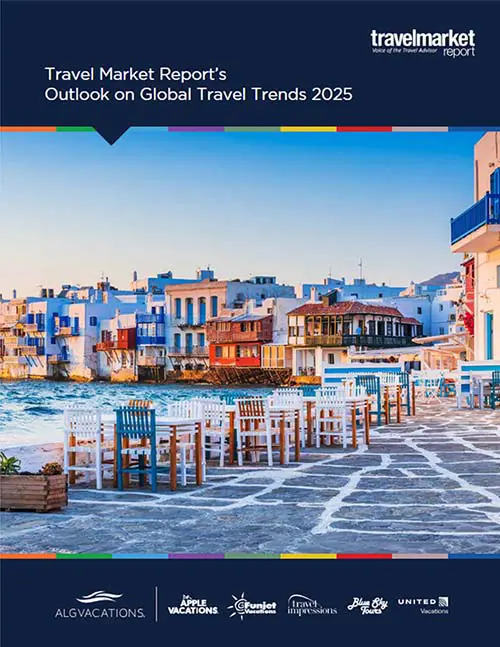How to Market and Sell to Clients Who are Creatures of Habit
by Richard D'Ambrosio
Photo: Shutterstock
It’s no secret that most human beings are creatures of habit. We follow the same route on our commute to and from work. We like the regularity of certain television shows. We frequently return to our favorite restaurants.
The same is true for most vacations, according to MMGY Global’s annual “Portrait of the American Traveler.” Sixty percent of all vacations were to destinations previously visited by the respondents to MMGY Global’s Travel Intelligence group’s 2019 report. Some 81% of respondents said that they took one or more vacations to destinations previously visited in the past 12 months.
“It is easy and comfortable. They know what to expect. If they have had a good time once, they will likely have a good time again, so it is a very low-risk trip,” said Stephanie Goldberg-Glazer, owner of Live Well, Travel Often, in Hollywood, Florida.
Terry Suero, owner of Toca Travel, a Buffalo, New York-based travel research company and retail/wholesale travel seller, believes the instinct to stick with what we know is “directly tied to the instinct of survival” in many humans.
“Going someplace new, where you might not speak the language, or understand how to get around, is very intimidating for a lot of people, so they may be afraid to waste vacation time and dollars on something they are unfamiliar with,” said Goldberg-Glazer.
According to MMGY, among travelers who took at least one vacation to a return destination during the past 12 months, the average number of those trips taken was 2.6.
For Tracy Whipple, of Travel On A Dream, in Deforest, Wisconsin, the most common repeat destination is Disney World. “We have several clients who make at least five trips to ‘the World’ annually. They feel at home at Disney World, and as updated and new attractions come out, they want to be among the first to experience them. We also have a number of clients who participate in Disney events multiple times each year.”
About 10% of Whipple’s clients select the same cruise itinerary and week, “with a handful who insist on the same stateroom each time on their favorite ship. When it isn’t available, they have a difficult time booking the cruise,” she said.
The overwhelming reasons why consumers take these repeat trips are to visit family and friends, and because they “enjoyed a past vacation so much” they wanted to experience it again (52% for both responses).
A close third was that the destination has specific attractions or activities they wanted to experience again (45%), and “going there is a tradition for my family” (31%).
Sourcing these tendencies can help a travel advisor increase their sales and income.
“I have quite a few high-end clients that love Disney and Disney World, specifically,” said Margie Lenau’, of Wonderland Family Vacations, in Walker, Michigan. “I sent them to Aulani, thinking that would help get them out of their comfort zone in Hawaii, but they went right back to Disney World, and said Aulani was just OK. They are diehard fans of the Mouse!”
Age can be habit-forming
Out of the three main demographic groups today, Baby Boomers are the strongest creatures of habit, MMGY found, with 86% reporting that they took one or more vacations to destinations previously visited during the past 12 months, versus 79% of GenXers and 78% of Millennials.
Slightly more than two out of three Baby Boomer vacations were to repeat destinations, versus just 59% for GenXers, and 53% for Millennials.
Interestingly, Baby Boomers were only slightly more likely to repeat vacation destinations to visit family and friends, with 54% of them saying that was the reason, versus 53% of GenXers and 50% of Millennials. In fact, MMGY reports those differences aren’t even statistically significant.
The greatest statistical differences appear to indicate that younger age groups choose the same destination for nostalgic purposes. According to MMGY, 35% of GenXers and 34% of Millennials choose repeat destinations because “going there is a tradition for my family,” versus only 26% of Baby Boomers.
For Goldberg-Glazer, Mexico/Caribbean resorts are popular for annual trips (either Christmas or summer breaks), especially for multigenerational families.
Further, 22% of Millennials say repeat vacation destinations are nostalgic, because they bring back childhood memories. Only 14% of GenXers said that, and 12% of Baby Boomers did.
Another significant difference across age groups is vacation cost. More than one out of four Millennials (27%) say they choose the same destination because they “get a great deal” on those vacations, versus 20% of GenXers and just 15% of Boomers.
“Price increases tend to be the number one reason for trying something else,” said Whipple. “As the annual trip costs go up and up, clients are more willing to consider options. They feel they have three choices: Forego the trip for a year or more, spend more on the same trip, or try something else.”
Breaking clients out of their comfort zone
While most vacation destinations are previously visited, consumers, of course, eventually break out and visit new places. According to MMGY, 72% of Millennials say they have taken at least one vacation to a new destination in the last year, versus 65% of Xers and 58% of Boomers.
“Surprisingly, most of my clients that go to the same places over and over again are younger – between 30-45, which is not what I would have expected,” said Goldberg-Glazer.
For many agents, understanding how these two seemingly different personality traits can reside in the same person is part of understanding how to build their businesses.
“People contradict themselves a lot of the time. It’s not necessarily based on age, or economic background. It’s not empirical,” Suero said. So, agents shouldn’t shut off the possibility of even the most conservative travelers trying something new, based on demographics.
“I had a group who loved to cruise. They had never considered a resort, although they all had passports,” said Tonya Carter, from Awesome Horizons Travel. “After three years of cruises, I finally talked them into visiting a resort, and four years later, they’re still trying all-inclusives, but in new countries now.”
Whipple’s agency offers agency-led group trips to show clients other options, while giving them the security of traveling with like-minded travelers.
“We have a client who had cruised on Disney more than ten times, making her a Platinum Castaway Club member. As a child-free couple, they wanted alternatives as the prices rose. After sailing on our first agency-led group with Celebrity, they have only gone back to Disney once for another group sailing, and have now moved up to Elite Plus status with Celebrity’s Captain’s Club, as well as trying several other cruise lines,” she said.
Seeing new attractions and participating in new activities are top motivators for more than 50% of all three generations.
“Most people do want to experience new things. There is a small percentage, maybe 10%-15%, who always want to do the same thing: Either return to the same all-inclusive or take the same cruise line to the same Caribbean islands,” said Goldberg-Glazer. “Then there is another category of people that want to see new places, but do it from the deck of a cruise line they love or staying at a hotel chain that awards them points.”
“I have a few clients who love the whole all-inclusive and beach experience, so we typically book something like that for them, but in different destinations,” said Jami Ellison, an agent in Poplar Bluff, Missouri.
Millennials diverge here from their elders. Experiencing “emerging, off-the-beaten-track destinations are more important to them (38%) than to Boomers and Xers (28%). Price is also a factor when thinking about visiting a new destination for Millennials (32%), versus 25% for GenXers and 17% for Baby Boomers.
Millennials are also more likely to be influenced by advertising (23%) versus their peer groups (17% for Xers and 16% for Boomers), and by the chance to be the first among their family and friends to visit a new destination (21% Millennials versus 11% for Xers and only 5% for Baby Boomers).
























